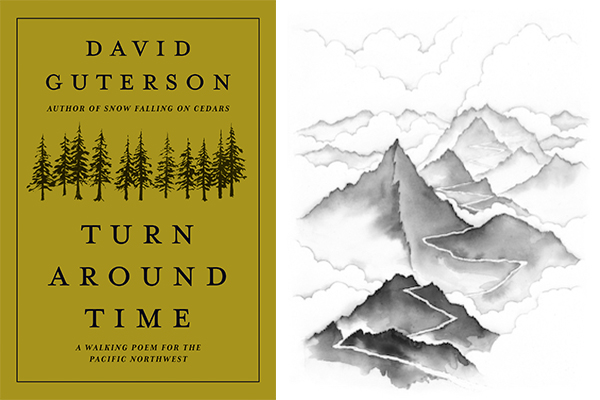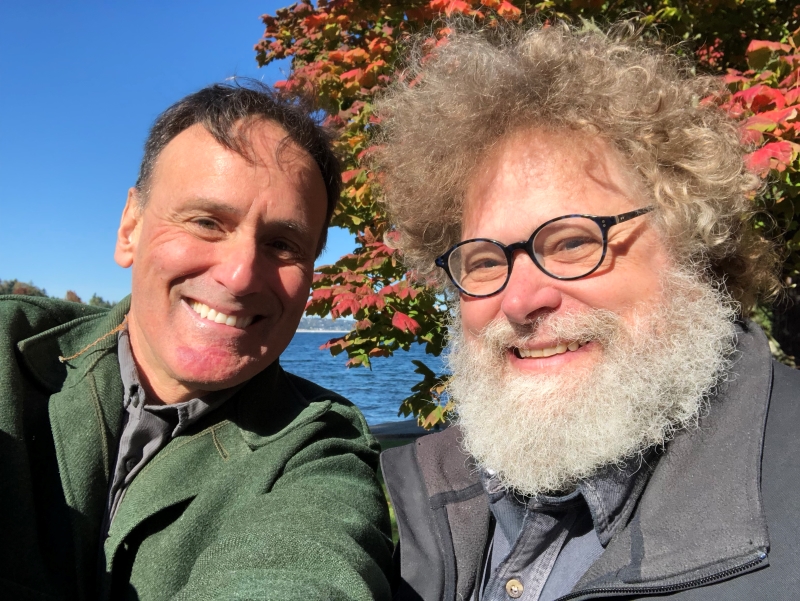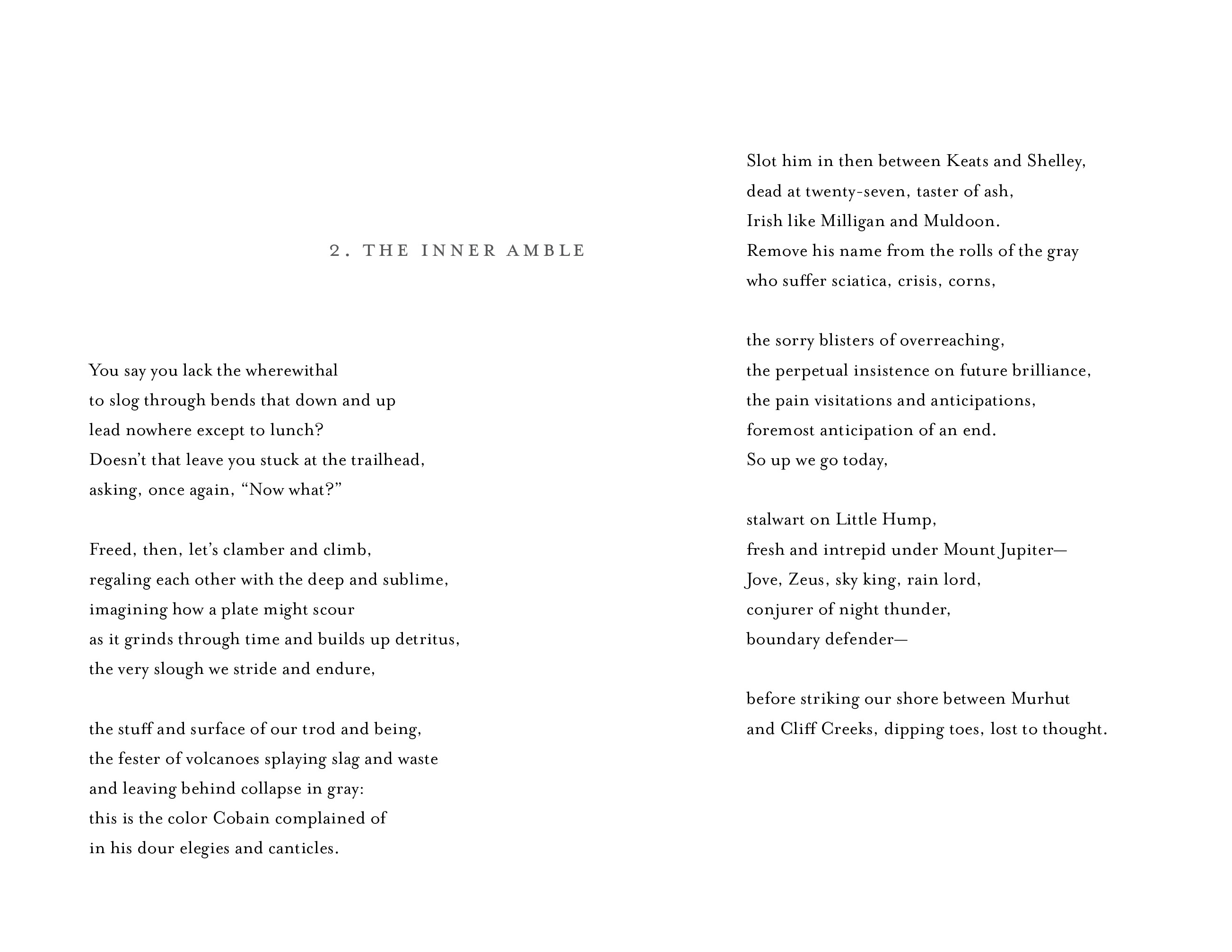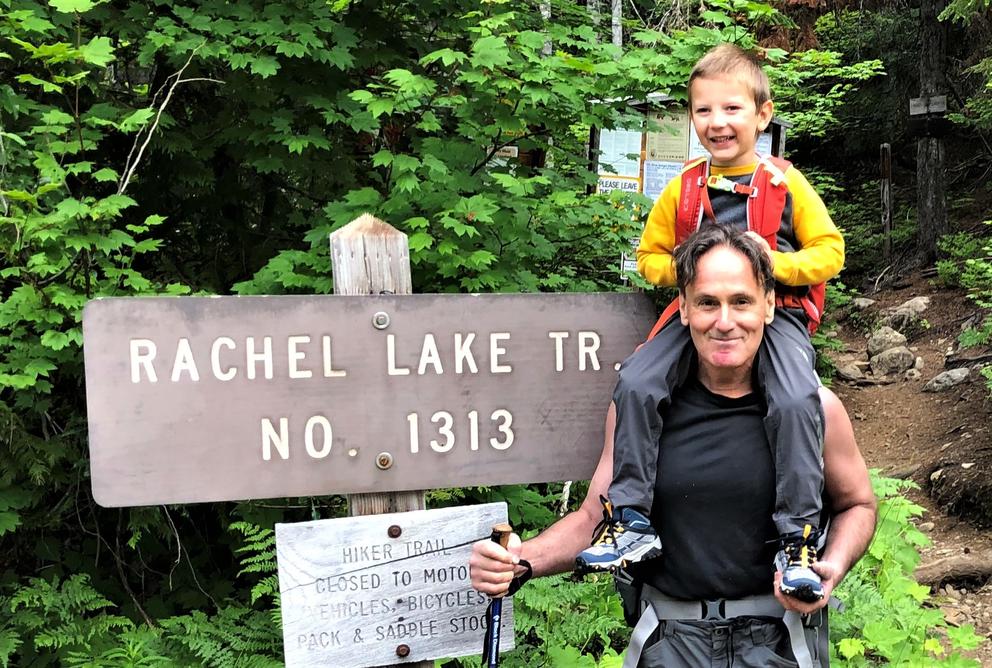Mountaineers Books is not known for publishing poetry. The company’s reputation has been built on hiking guides and mountaineering memoirs. This is a first: an epic poem by a famous writer. Guterson is one of Seattle’s preeminent authors, behind such novels as Snow Falling on Cedars, Ed King, and The Other, books deeply imbued with Northwest locales, history and serious themes.
Turn Around Time has these aspects, but much more. It reads like a cerebral exercise in the outdoors, a poem not simply about hiking, but about the journey of life itself. It is augmented with black and white illustrations by Northwest artist Justin Gibbens.

Guterson and I had a chance to talk about this on a walk around Seward Park. The lanky, sixtysomething author showed up as one might expect, sporting a Forest Service green Filson wool cruiser of ancient origin. Seward has been my stomping grounds since my toddler days, and the park’s peninsula was an easy place for the Bainbridge Island writer to meet in town among trees and along the shoreline on a very quiet fall afternoon.
Guterson is no stranger to the outdoors. He had an uncle who took him on hikes and adventures. He joined the Boy Scouts, he tells me, so that he and a friend could get out into the wilderness more easily. He cleared brush for the Forest Service when he was younger. Turn Around Time is structured around a concept from alpinists: that halfway point when, no matter what, it’s time to come back.
His poem is divided into two major parts: Out and Back, each broken into a dozen pieces that can be read together as a single stream of narrative or as 24 separate poems. The important thing, he says, is that he wanted his poem to be “propulsive,” to sweep the reader along on the poetic journey.
Anyone who has hiked is familiar with that sometimes painful, sometimes joyful moment of the turnaround. It’s frustrating if one has not reached a goal or summit, or when the magnetic effects of the wilderness tempt you further, despite coming darkness. It can also bring relief to sore feet, chafed thighs, insect-pestered skin or an empty stomach.
Guterson tells me he sees the turnaround as a way of describing one’s movement through life: There’s a time of heading out and a time of heading back — one more exploratory perhaps, the other more reflective. He quotes Carl Jung to me and I look up the full quotation later: “[W]e cannot live the afternoon of life according to the program of life’s morning, for what was great in the morning will be little at the evening and what in the morning was true, at evening will have become a lie.”
The hike and life have two phases, rich in different ways. “When you turn around,” he says, “everything looks different.”
We continue our loop through the park’s old growth forest, then along an open shore with a view of the tops of downtown skyscrapers over the Mount Baker ridge, rich with fall colors. Guterson says he see his life at the turnaround point, common for folks in their 60s or 70s. He always liked to go off-trail. “I never had a huge interest in risk-taking,” he says, but he has relished crashing through the bush and devil’s club, exploring places off grid.
In a way, writing poetry now feels a bit like that, I suspect. When he was young, Guterson says, he was full of literary ambition. “I wanted to be great. We all do.” He’s at a stage in life where he can do things differently. Instead of seeking to make his literary mark — which he has already done — “I can write poetry for the sake of writing poetry.” Turnaround time means a bit of liberation: “Life’s too short to give it over to this restless ambition.”
The connection between walking and the creative process fascinates Guterson. The work of poets like Basho and William Wordsworth “are inextricably bound up with walking,” he says. “There is no Wordsworth without walking.”
I’m going to refrain from quoting examples of Guterson’s poetry because I have always found that such poetic snippets rarely make the point intended. (You can read an entire poem, below.) Poems are complicated, ambiguous, intuitive, are best read in context. It’s like trying to describe a person by showing their amputated limbs one at a time.
But I will describe it a bit. The book is small, pocket-size. In his introduction, he writes, “You can put it in your pack while adding no weight….” Physical weight, perhaps. But there is psychic weight here.

Northwest poets of an earlier generation, like David Wagoner, William Stafford and Beth Bentley, in the early 1960s often described the forests and outdoors with a kind of modern cleanliness. In these texts, nature is often admired and also seen as an extension of inner processes. Wagoner’s “Staying Alive” is a classic of the genre. The woods are woods, but you can be lost anywhere, including within. For these poets, nature was raw material to design a lovely poetic midcentury structure.
Guterson’s work is something else. It is full of the details of trail life, good and bad, frustrations with companions, dense with thoughts and allusions, nods to other poets. On the trail you meet trolls, bats, dirty snow, deep forests, discomfort, soaring birds of prey, fatigue and the ideas of poet Philip Larkin, among many other things. Guterson’s is a fertile mind rummaging a very large poetic emporium to outfit his journey. His epic feels like it has some of the qualities of the glorious old Capitol Hill REI co-op, with its bins, hampers and piles of gear.
Turn Around Time is more T.S. Eliot mixed with a tad of Walt Whitman and The Beats (the “poets of the peaks,” like Jack Kerouac and Gary Snyder), poetry unafraid of big words and big thoughts, a rain forest or mountain range of ideas. It is no more a simple appreciation of nature than Eliot’s “The Love Song of J. Alfred Prufrock” is a walk on the beach in white flannel trousers.
As we near the Seward Park parking lot, our brief two-mile jaunt has come full circle and I have used it to compose a rough outline of this story. For Guterson, his journey out and back demonstrates that literary ambition lingers, ranges widely, and even sharpens on the trail.






